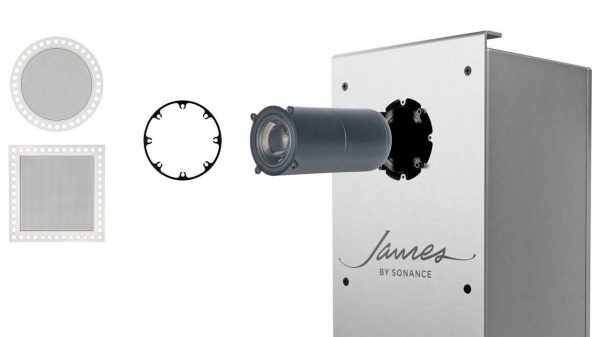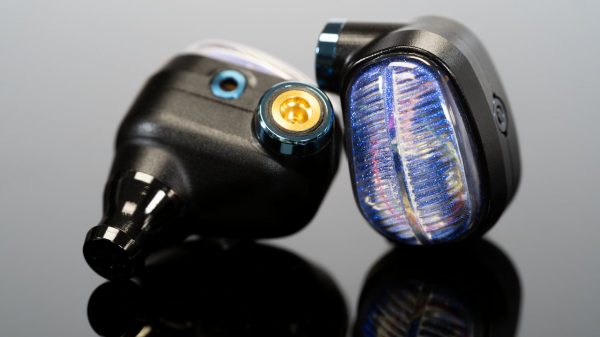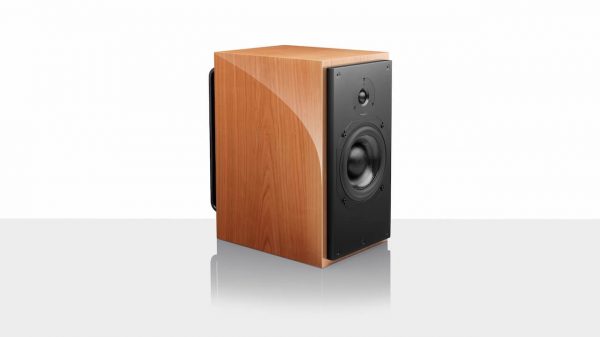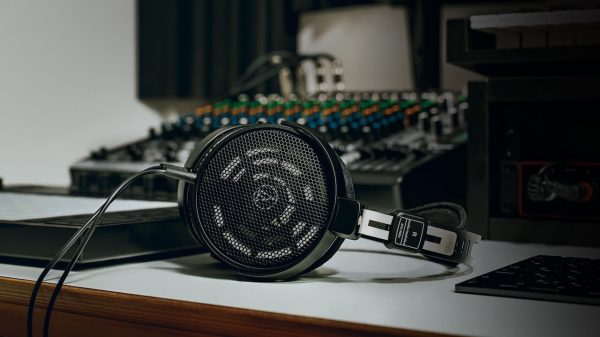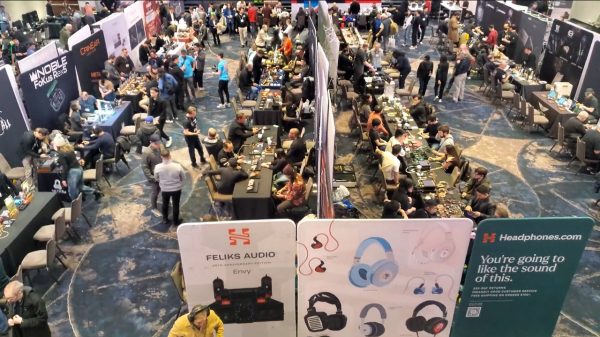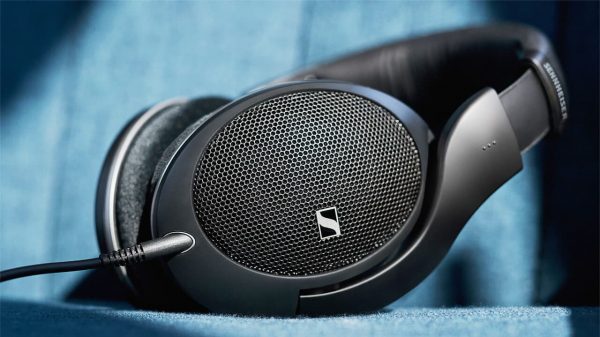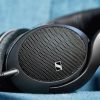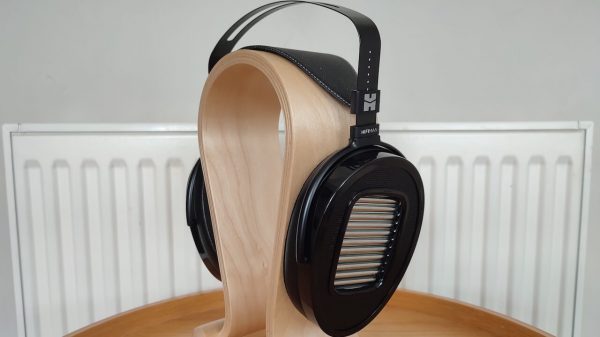So when is the ‘Drop’ of the new Sennheiser HD8xx not really a great drop? The announced drop last week created a lot of excitement but also forced one to really read the fine print in regard to how the new HD8xx will differ from other models.
The ad copy is quick to point out HD800s performance levels, the ring radiator driver designed by the legendary Axel Grell, and pricing at $1,100 USD with a $200 store credit if you pre-order.

HD800s performance levels may be the hardest claim to pin down since the driver is a new model and the tuning is not the same. When spending over $1,000.00 USD on a headphone, most people expect longevity. With a new, heretofore untested driver; there is some risk as there simply is not enough data to have a realistic expectation of its lifespan or maintenance requirements.
On the flip side, the HD800 commands most of its original price when it comes up on the used market and has a sterling reputation for longevity if reasonable care is taken. The HD800s also has an enviable reputation in the years it has been available. The fact that the HD8xx is being made by Sennheiser in Germany and not by Drop also helps it, as we have seen some missteps from models made at Drop for other collaborations. In their defense, those missteps were corrected quickly, but I’d prefer not to need a replacement as to have it quickly replaced.
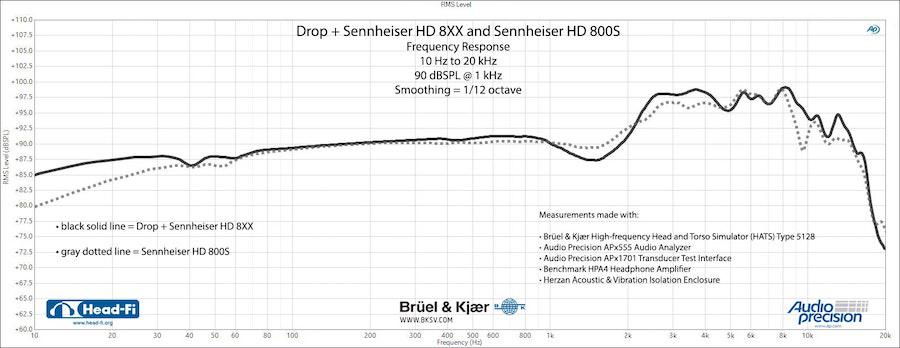
The ad is also quick to point out that they have “improved” the sound signature of the HD800s when tuning the new HD8xx. Looking at the frequency response graph provided by Drop and Head-Fi, the HD8xx has more sub-bass quantity and extension (60Hz down increase with roll-off moving from roughly 40Hz down to around 15Hz), a bit less mid-range energy (seen from 1kHz-2kHz), and a boost in the upper midrange (2kHz-4kHz).
Do these changes constitute improvement?
I think that will be judged by every user who tries the HD8xx and while the bass numbers do look good, I never felt the HD800s was lacking in the 2-4kHz range and worry that the “improvements” in that area may be too much of a good thing.

The other chart provided by Drop/Head-fi compares the total harmonic distortion (THD) between the HD800s and HD8xx and shows that from 1kHz up, the HD8xx has a higher level of distortion than the HD800s.
So is it better or just different?
The ring radiator driver has been a staple of the 800 series since Axel Grell and his team designed it to address shortcomings in the original prototype HD800 dynamic driver. Axel is a legend in the industry since joining Sennheiser in 1991.
In the 27 years that followed, Axel led a team of engineers that designed the HD600 series, the HD800 series, the ill-fated HD700, and the second-generation Orpheus (The 2015 HE 1). Contrary to information being shared online, Axel did not design the original Orpheus. It predates his tenure at Sennheiser.

This all sounds really promising for the HD8xx as it will be handmade in Germany per the documentation, but Axel left Sennheiser in 2019 and patents filed in the years leading up to his departure suggest he was focused on a planar transducer rather than investigating improvements in the 800 series drivers.
In an interview with Crutchfield staff, Axel admitted that the driver in the HD820 was the same as the HD800s and the effort to develop the 820 was largely finding the right material for the enclosure (Gorilla glass) and the right shape to direct reflections away from the ear.
That would suggest that his focus on improving the ring driver ended somewhere around the release of the HD800s and patent dates support that as the most recent patent for the ring driver was filed in 2015 in Germany.
Based on the collected evidence, we must assume the driver in the HD8xx will be the first model not designed and tested by Axel. The new designer may be very talented as well; we simply don’t know yet and we are being asked to take a huge financial leap of faith.
That $1,100.00 leap of faith is a bit controversial in and of itself.
I have to raise my eyebrow at vendors who play games like this. If you are going to give consumers $200 off the price, don’t bill them the full price and then give it back as store credit.
This is a marketing ploy to generate repeat business, and in my estimation, not a very good one. I would much rather become a repeat customer because I had a great experience and want to come back, as opposed to being forced to come back because my money is being held hostage and I must find something to purchase to recoup it.
Tactics aside, the price of the HD8xx is close enough to the HD800s, that it begs the question — why wait until December when you can get a new pair of HD800s today?

To get a true comparison, you need to purchase the HD8xx and the 507469 balanced cable ($379), as the cable comes as part of the HD800s kit, but not with the HD8xx. That puts the total bill at $1,479.00 for the Drop Sennheiser HD8xx while the retail price on the HD800s is $1,399.95.
Even with the $200 discount, $1,279 vs $1,399 is not a big savings when you consider the delay and risk you incur. Add to this, the fact that the original HD800 can often be found between $700 and $800 on the used market and it becomes a toss-up between buying the $900 discounted package sight unseen or the HD800s for $150 less.
Still, there is no member of the HD800 family I would not love to have in my collection, and I can’t imagine Sennheiser risking the reputation of its flagship line on a less than fitting offering.
I think this explains why Sennheiser is building the HD8xx in Germany, and allowing Drop to manufacture the HD6XX under license in the USA as this gives Sennheiser tighter control over the resulting product.

Even with all of that information and some degree of uncertainty – why would my pre-order already be in?
It’s a Sennheiser with the 56mm ring radiator driver in a different tuning than I currently own and I have 30 days to evaluate it risk free.
Resale on most Sennheiser models hovers around 85% of the MSRP, so even if I decide that the HD8xx is not for me outside the 30-day window, I’m likely only out a couple hundred dollars in the worst-case scenario.
The upside of an HD800 with the two biggest complaints leveled against the original corrected at the Sennheiser factory rather than having to mod them with my comparatively unskilled hands is just too great to pass up.
I’ll let you know if my gamble paid off next December when the first products ship.
Pre-order for $1100 at Drop.com. Members who pre-order earn 20000 Drop Rewards Points, which is equivalent to $200 off a future Drop purchase.
All orders will be shipped by Drop.
Estimated ship date is Nov 25, 2021.



